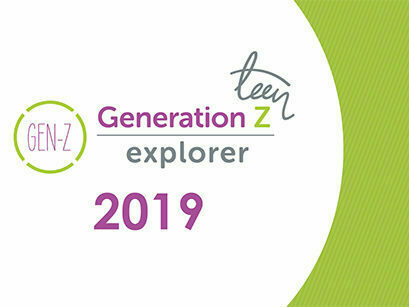While cause marketing isn’t new, it is taking the stage in a brand-new way. 2020 is ushering in a new era of marketing, in which brands and the causes they support are inextricably connected. Consumers are expecting more from the brands they support, but in exchange, are offering brand loyalty.
At Refuel Agency, we’ve been executing impactful cause marketing campaigns with nonprofits and brands for over 30 years, educating and involving the niche audiences we deliver. Cause marketing is here to stay — here’s what it is, and how your brand can strategically implement cause marketing campaigns to drive brand loyalty.

What is cause marketing?
Cause marketing is defined as the collaboration between a for-profit and a non-profit to educate people on the causes that need attention, what they’re all about, and the ways that they can help. Cause marketing is a powerful medium for consumer brands to serve as catalysts and critical platforms for broad public engagement and support for a cause or organization.
Today’s consumers have raised the bar, and are looking for brands to fill the gaps where other institutions may be failing. Cause marketing gives brands the opportunity to connect with their target audience through shared values and a dedication to the greater good.
Types of cause marketing campaigns (include, but not limited to):
- Charitable sales promotions (where you pledge a percentage of sales, proceeds or a predetermined sum to benefit programs as a result of the sale of your product)
- Making a donation in lieu of employee or client gifts, awards, etc.
- Promoting a challenge or match donation to employees and/or customers
- Hosting a donation drive
- Providing change collection devices or “round up” promotions
- Equipping your employees to directly ask consumers for a donation
Related reading: The Top 8 Types of Cause Marketing Campaigns
Cause marketing is both big business and good for business
In 2010, companies put $1.6B into cause marketing, and nonprofits put in $7.6B – this combined means there’s a $9 billion plus sector focused on getting the attention of consumers through cause-related marketing.
A study from Mintel shows that in non-crisis times, nearly 73% of Americans say a company’s charitable giving affects their purchase decisions, while 84% of consumers place importance on a company’s support for a charitable cause. The study also found that customers with emotional relationships with a brand have more than 300% the lifetime value as those who don’t, and will be 26% more likely to recommend that brand to others.
Another study from Cone Cause Evolution found that 87% of consumers would switch from one brand to another if another brand were associated with a good cause.
Related reading: 5 Cause Marketing Mistakes to Avoid in Your Next Campaign
The power of cause marketing to young people
Cause marketing to the general public is a powerful way to drive cause awareness and social change. But cause marketing to young audiences is particularly powerful, because it shapes the perceptions of the next generation, a generation that really moves the needle on social change with their energy, enthusiasm, and fresh take on the world around them. Strategically placing your cause marketing campaigns in front of young people is a powerful way to shape the perceptions of the world’s future changemakers.
Additionally, young people are motivated by causes. According to Refuels Gen Z Explorer™, 48% of Gen Z are progressive on racial issues, 47% are progressive on gender issues, and 45% are progressive on environmental issues. Gen Z is highly socially conscious with a “big picture” mentality, and research shows that they value brands who support the causes they want to support.
At Refuel, we’ve been educating young people about important causes for over 30 years with our targeted media and marketing solutions. We believe tjat educating young people about important social and environmental issues is a key tenet of successful cause marketing.
Read next: The Ultimate Guide to Marketing to Gen Z
What do cause marketing campaigns look like?
At this point, cause related marketing is so integrated into the fabric of modern marketing that it tends to blend in. But if you look closely, it’s everywhere.
The first cause marketing campaign took place in 1976 by a partnership between Marriott Corporation and March of the Dimes, a nonprofit helping to prevent birth defects in babies. March of the Dimes’ goal was to increase fundraising for its chapters in the Western U.S., and Marriott’s goal was to generate cost-effective PR and media coverage for the opening of their family entertainment complex, Marriott’s Great America in Santa Clara, California.
Here are a few cause marketing examples:
Team World Vision: World Vision
In 2005, World Vision’s National Director Michael Chitwood channeled his love of running marathons towards the fight for clean water by founding Team World Vision. Team World Vision is a national team of distance runners that fundraise for clean water while they train to run in the nation’s largest marathons or half marathons.
Real Beauty: Dove and Unilever
Dove performed a study that found that only 2% of women consider themselves to be beautiful. With these results in hand, they partnered with Unilever to launch the “Campaign for Real Beauty” to address our unattainable definition of modern beauty. Since the brand launched the campaign in 2004, sales have increased over 60%.
And during the pandemic, Dove pivoted this long-running campaign to spotlight healthcare workers with marks from wearing masks all day, with the tagline, “Courage is Beautiful”.
One for One: TOMS Shoes
The “buy one give one” model is a popular one in cause-related marketing, and TOMS leveraged this model in the hugely popular “One for One” campaign. This campaign launched back in 2011, with each TOMS purchase prompting a donation to a child living in poverty.
Looking to Refuel your cause marketing campaigns? Take a look at our cause marketing portfolio, and contact us today to receive your custom media plan for targeted impact.



